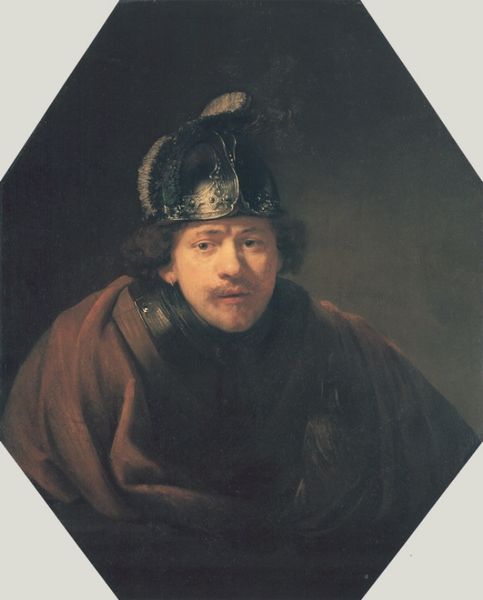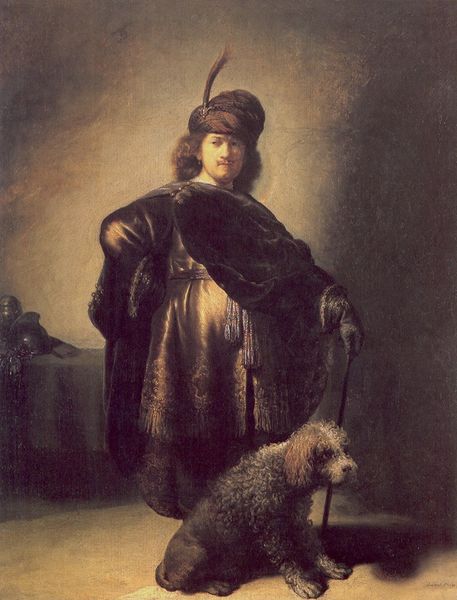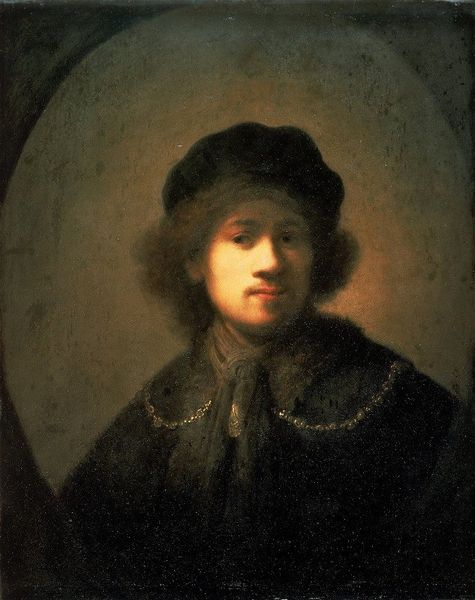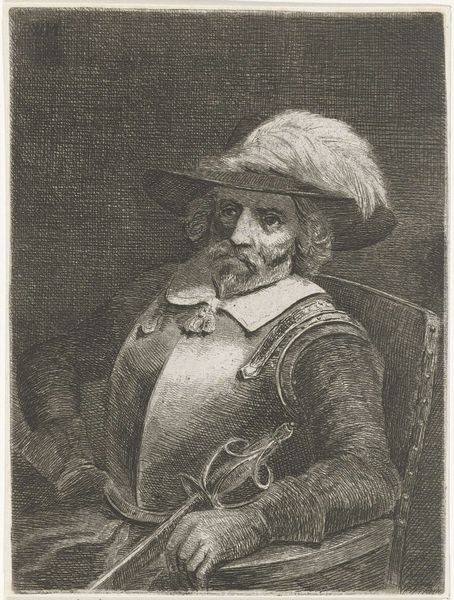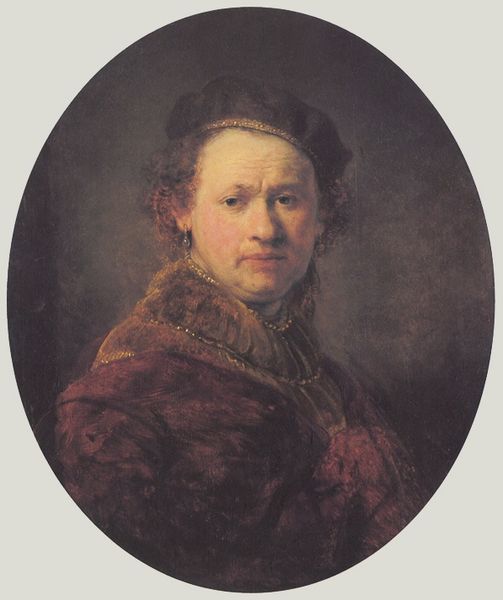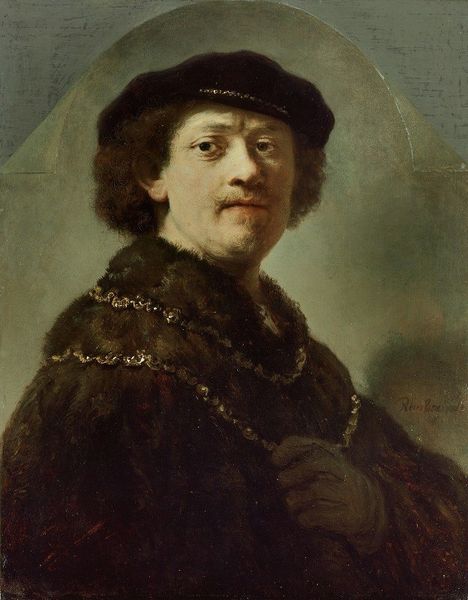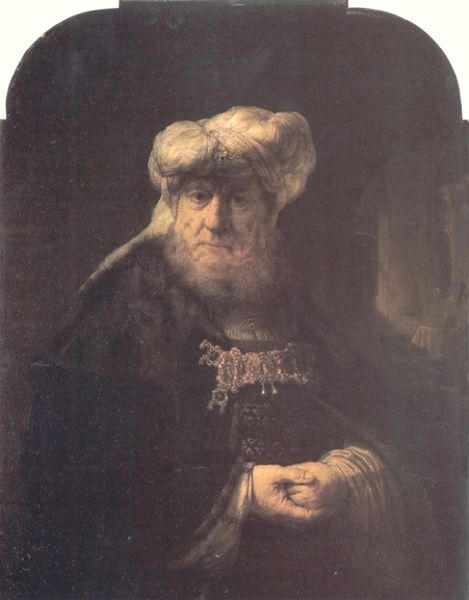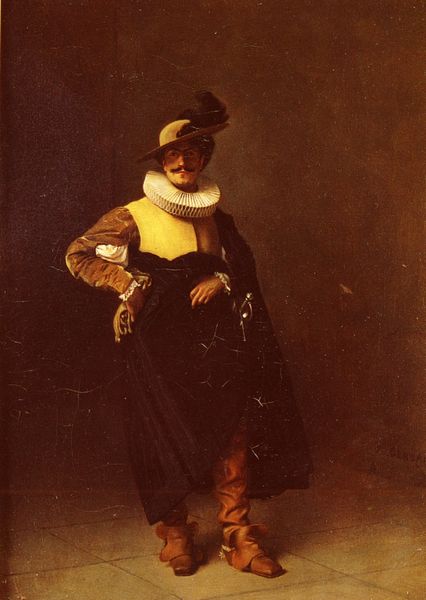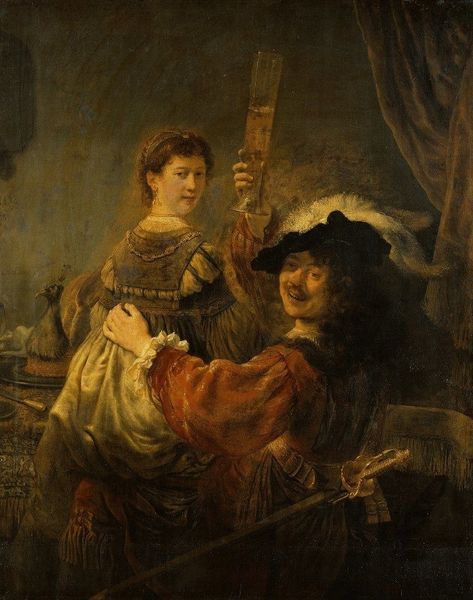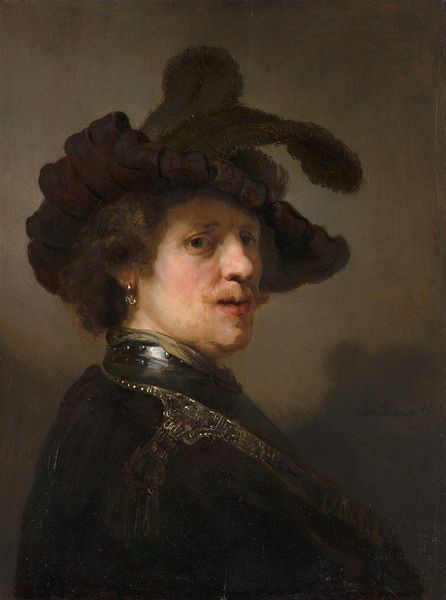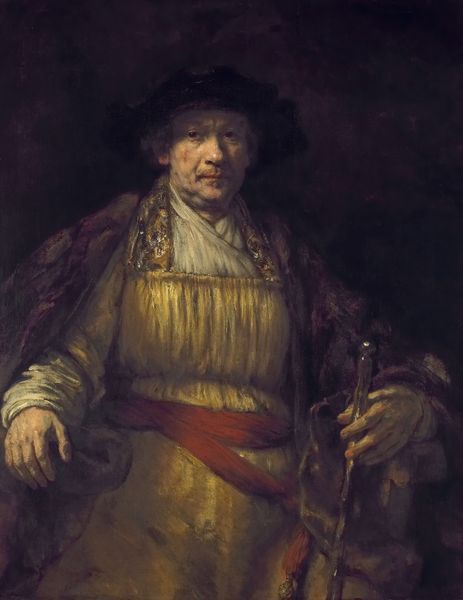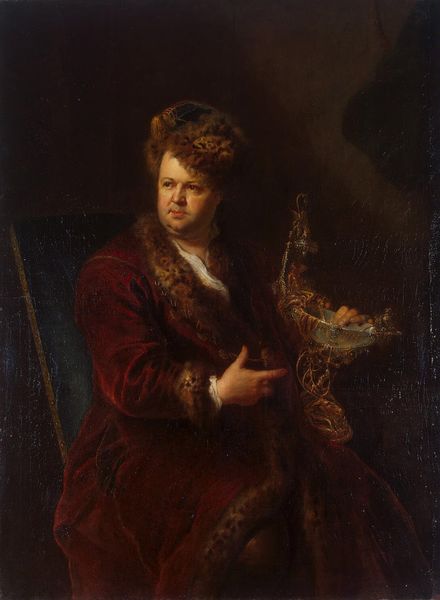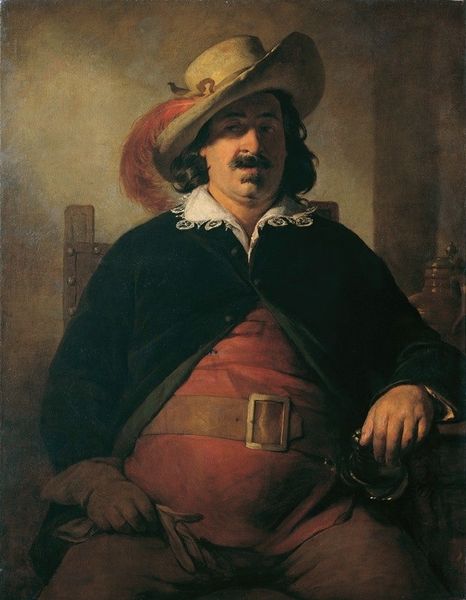
painting, oil-paint
#
portrait
#
baroque
#
painting
#
oil-paint
#
figuration
Dimensions: 119 x 97 cm
Copyright: Public domain
Curator: Painted in 1636, Rembrandt van Rijn’s “The Standard Bearer,” a powerful portrait executed in oil on panel, depicts a figure in opulent military garb. It’s quite striking. Editor: It really is! There's something inherently performative here. The sumptuous fabric, the bold stance – it's all so carefully constructed to convey power and perhaps a bit of Dutch swagger, no? Curator: Absolutely. It reflects a society that saw war as not only political but theatrical. The figure’s clothing itself – consider the leather, the metalwork, the dye used for his plumes – everything comes with a social context, indicating status through consumption and craft production. We can explore who benefited materially from creating such finery for warfare, for instance. Editor: Right. The Dutch Golden Age was built on a complicated network of global trade and colonial expansion. How does a "Standard Bearer" operate within that narrative? I mean, this painting wasn’t created in a vacuum. Was he meant to evoke national pride, to bolster support for military campaigns? There’s also the historical role of standard bearers. These roles were open only to specific demographics—namely, wealthy men. Where do people who were excluded by gender and economic standing enter into the conversation? Curator: Thinking about the means of production gets to the heart of that—all these textiles, metal wares: workshops, global sources for dye, specific laborers dependent on his spending—that web brings different experiences to light. This painting is about a very specific material reality and has a powerful interplay with artistry. It forces us to examine our own consumerism, and it helps us connect to that reality more intimately, centuries later. Editor: I agree! Understanding art means understanding not just aesthetics but also historical structures. It’s how we can approach historical representation in ways that challenge established views, reveal silenced voices, and build a deeper and more complete understanding of our shared story. It opens doors to wider, more inclusive interpretation, enriching everyone’s experience and critical reflection. Curator: Yes. It's rewarding to understand how art serves not merely as image, but as document, and testament to lived reality, expressed with intention. Editor: Definitely, this reframes so much beyond the canvas itself, doesn't it?
Comments
No comments
Be the first to comment and join the conversation on the ultimate creative platform.
